Ever since European explorers brought chocolate back from Mexico in the 16th century, it's been an ingredient in a wide variety of dishes, prepared in a range of ways. Chocolate comes from the cocoa bean, Theobroma cacao. Which parts of the seed are used, and what other ingredients are added, determines the type of chocolate that results.
Dark Chocolate
Dark chocolate contains a high percentage of ground and dried cocoa solids, which gives it its characteristic dark color. Because of its high cocoa and relatively low sugar content, it has a strong, bitter taste. Chocolate without any added sugar is known as bitter chocolate or baking chocolate; the expectation is that the cook will add sugar to suit the recipe. A slightly higher level of sugar produces bittersweet chocolate; the sweetest dark chocolate is semisweet.
Milk Chocolate
The most common type of chocolate found in candy bars and other sweets, milk chocolate contains a mixture of cocoa, sugar and milk, usually but not always in the form of powdered milk; in the United States, at least 12 percent of its total weight consists of milk solids. The mixture of milk and cocoa gives it a medium-brown color and a smooth, sweet flavor.
White Chocolate
Unlike milk and dark chocolate, white chocolate contains no cocoa solids; its only cocoa content comes from cocoa butter, the fatty part of the cocoa bean. It has a creamy, mild flavor and an off-white color.
"Chocolatey" or "Chocolate-Flavored"
If you see a product with one of these descriptions on the package, you're dealing with something that isn't quite chocolate; although it contains cocoa solids, it substitutes less expensive fats such as vegetable oil for cocoa butter.
Drinking Chocolate
Chocolate first reached Europe as a drink rather than a food; an expensive treat, it caught on among the fashionable crowd. Solid chocolate bars weren't widely seen until the 19th century. In the Americas, drinking chocolate had been a staple of the Aztec and Olmec civilizations for centuries, although the potent, bitter brew -- sometimes spiced with chili -- didn't much resemble the sweetened modern drink.
Famous Chocolate
Over chocolate's history, some nations have acquired a reputation for producing particularly excellent confections. For instance, Belgium's tradition of chocolate manufacturing is world famous and includes all varieties of chocolate. In Belgium, "chocolate" typically refers to products with over 30 percent cocoa solids; anything less than that is "confectionery." Among the most famous Belgian confections are pralines -- not the nut sweets known in the United States, but chocolate shells with oozing centers -- and truffles, soft-centered sweets modeled on the fungus of the same name.
Related Articles

Which Country Produces the Most ...
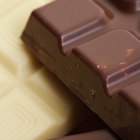
The Antioxidant Levels of Cacao
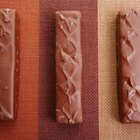
Ingredients of Candy Bars
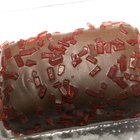
FDA Standards of Chocolate Identity

Difference Between American and ...

Swiss Chocolate Facts
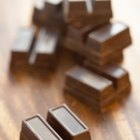
How to Save Burnt Chocolate
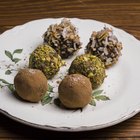
How to Make Your Own Chocolate Truffles
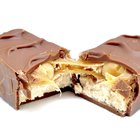
How Many Calories Are in a Fun Size ...
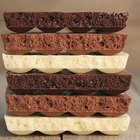
Foods Containing Theobromine

Chocolate Martini: How Many Calories?

The History of Nestle Chocolate

The Difference Between Brown and White ...

How to Remove Chocolate Stains From ...

Bad Effects of Chocolate

The History of Caramel Candy

Stimulants in Chocolate That Are not ...

The Difference Between Bittersweet ...
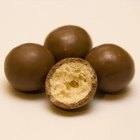
Malted Milk Ball History

How to Substitute Cocoa Powder for ...
Writer Bio
Dr James Holloway has been writing about games, geek culture and whisky since 1995. A former editor of "Archaeological Review from Cambridge," he has also written for Fortean Times, Fantasy Flight Games and The Unspeakable Oath. A graduate of Cambridge University, Holloway runs the blog Gonzo History Gaming.